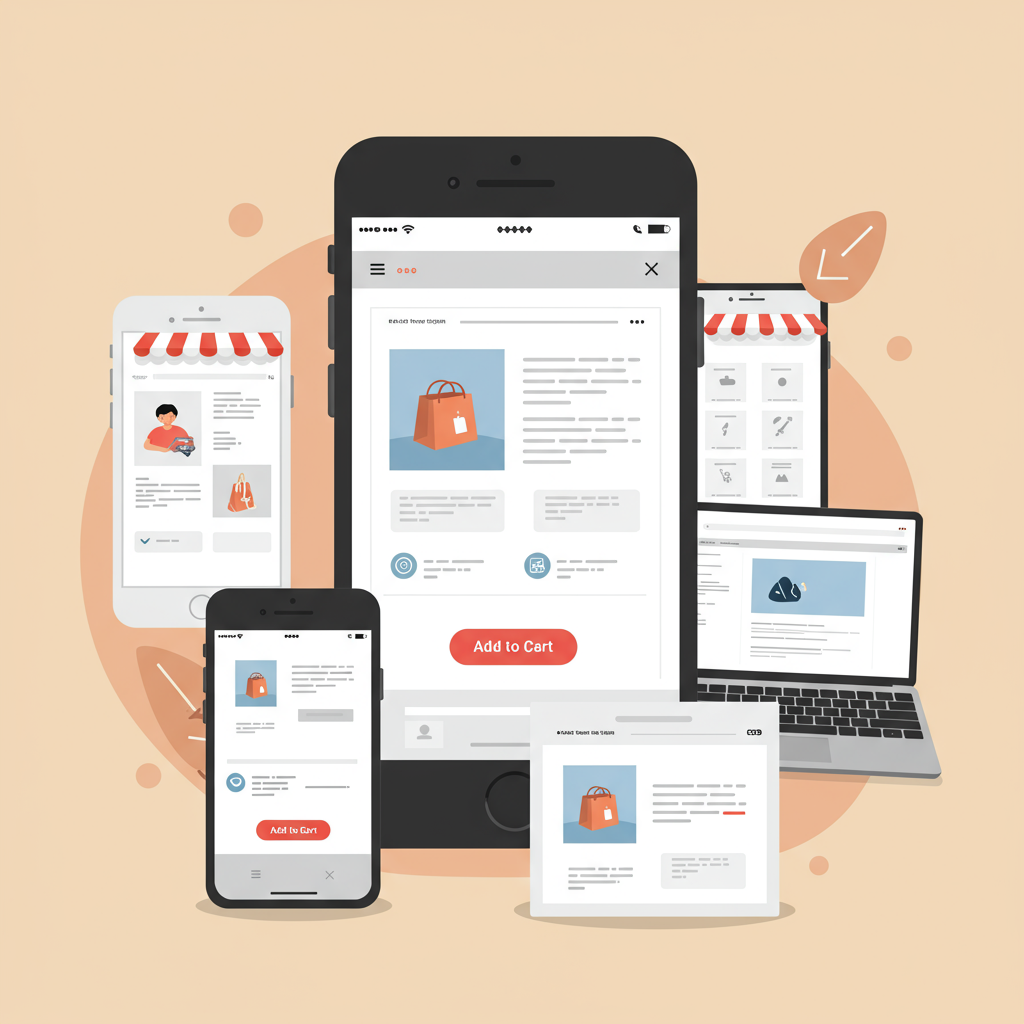Optimizing Your E-commerce Experience for the Modern Shopper
Hello fellow Shopify merchants! Today, I want to talk about something incredibly crucial for your online store’s success: designing for mobile first.
In my experience, the shift towards mobile browsing isn’t just a trend; it’s the dominant way people interact with the internet, especially when shopping.
Think about it: how often do you find yourself browsing products or even making purchases directly from your smartphone? Probably quite often, right?
This is why I firmly believe that if your Shopify store isn’t optimized for mobile devices from the ground up, you’re leaving a significant amount of potential revenue on the table.
A mobile-first approach means we design the smallest screen experience first, then progressively enhance it for larger screens. It’s about prioritizing the core experience.
Why is this so important? Mobile users often have less patience, slower connections, and smaller screens. Every element must be intentional and efficient.
My first piece of advice is to choose a mobile-responsive Shopify theme. This is the absolute foundation of your mobile-first strategy.
Shopify’s theme store offers many excellent options that are built with responsiveness in mind. Look for themes that explicitly state their mobile optimization.
Once you have a responsive theme, the next critical step I always emphasize is image optimization. Large, unoptimized images are mobile performance killers.
I recommend using tools or Shopify apps that automatically compress and resize your images without sacrificing quality. This dramatically improves load times.
Next, let’s talk about navigation. On a mobile screen, complex menus are a nightmare. I strive for simplicity and clarity.
A clean, intuitive “hamburger” menu is often the best solution, but ensure its icon is easily recognizable and clickable.
Your product pages are where the magic happens. For mobile, I focus on clear, concise product descriptions that get straight to the point.
High-quality product images are still vital, but ensure they are optimized for quick loading and can be easily zoomed or swiped through on a small screen.
The “Add to Cart” button must be prominent, easy to tap, and ideally “sticky” as the user scrolls, so it’s always accessible.
I also pay close attention to the checkout process. This is where many mobile users abandon their carts if it’s too cumbersome.
Minimize the number of steps and form fields. Use autofill whenever possible. Offer popular mobile payment options like Shop Pay, Apple Pay, or Google Pay.
Remember, every tap counts on mobile. The fewer taps required to complete a purchase, the higher your conversion rate will likely be.
Another area I find incredibly beneficial is the use of Shopify apps specifically designed to enhance the mobile experience.
These can range from apps that improve page speed to those that offer mobile-specific pop-ups or push notifications.
However, I caution against over-reliance on too many apps, as they can sometimes slow down your site. Choose wisely and test their impact.
Testing is paramount. I can’t stress this enough. You must test your Shopify store on various mobile devices and screen sizes.
Use Shopify’s built-in theme customizer to preview mobile views, but also physically test on your own phone, a friend’s phone, and perhaps a tablet.
Pay attention to how elements stack, how text wraps, and if all interactive elements are easily tappable with a thumb.
Finally, monitor your mobile analytics. Google Analytics and Shopify’s own reports can tell you a lot about mobile user behavior.
Look at bounce rates, conversion rates, and time on site for mobile users. These metrics will guide your ongoing optimization efforts.
What do you think about these mobile-first strategies for Shopify? I’d love to hear your thoughts and experiences!
By embracing a mobile-first design philosophy, you’re not just adapting to current trends; you’re future-proofing your Shopify store.
You’re creating a seamless, enjoyable shopping experience for the vast majority of your potential customers, leading to higher engagement and, ultimately, more sales.
So, take the time to review your Shopify store through the lens of a mobile user. It’s an investment that will undoubtedly pay off.






